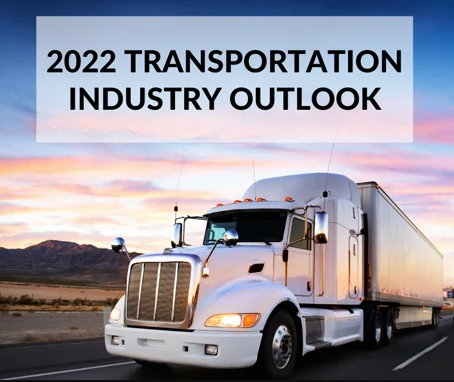Transportation Industry Outlook 2022: Part I: Driving positive change despite bumps in the road
January 14, 2022
By Todd Bateson – EVP, Commercial Transportation and Tom MacCallum – VP, Loss Control
As the economy goes, so goes trucking. And as America continues to struggle with the ongoing global pandemic, trucking is wrestling alongside the rest of us.
Trucking faces many challenges. Beyond accident risk, there are nuclear verdicts, a massive driver shortage, growing supply chain woes and inflation to contend with — and these are our legacy problems.
New challenges for the new year include maintaining driver retention, availability of trucking equipment and the changing motor carrier/owner-operator relationship.

So, how can trucking thrive in 2022?
The answer will be a combination of addressing emerging industry challenges (see below) while simultaneously managing legacy risks (stay tuned for Part II).
Here are the top trends driving positive change in 2022 from IAT Insurance’s Commercial Transportation and Loss Control team.
- Supply chain bottlenecks will extend repair times.
The cost of equipment and parts will continue to inflate in 2022 and will largely remain in limited supply, which means trucking companies will run older equipment longer. With older equipment in use more than ever before, and the likelihood of it breaking down greater, availability of new parts and equipment as well as the ability to maintenance the older vehicle will increase.
What can you do?
Regular maintenance will ensure your vehicles operate at optimal levels resulting in lower costs. In addition, be sure to review the physical damage values on your insurance policy. You do not want to have underinsured equipment at the time of an accident. Shortchanging your policy may save $100 here or there, but if damage occurs to a vehicle, you potentially could lose thousands of dollars of replacement funds which will have a significant impact to your bottom line.
- Driver Retention – The more your drivers are engaged and committed to the company, the more drivers you’ll retain. Fleet carriers are taking more of a supportive approach by creating a culture around their drivers, doing more
to make the driver’s life easier, including checking in with drivers regularly to address any issues and helping them find a place to park and rest, for example, all while compensating them well.
TIP: Consider buying your owner-operators tires after a certain number of accident-free miles; build a driver’s lounge; hold a driver appreciation BBQ; hire a safety manager to champion driver causes — and more. - Relationships with the motor carrier are changing.
Historically, the transportation industry has relied on independent contractors and owner-operators as a solution to meet fluctuating demand.
In recent years, legislation has been introduced in several states that threaten the independent contractor/owner-operator model.
Given the legal and regulatory uncertainties around how independent contractors and owner-operators are able to operate in each state, you may face unintended and unwanted costs and liabilities if these relationships are not managed appropriately.
What can you do?
In order to establish the appropriate “arm’s length” relationship with your contracted owner-operators, we recommend you seek legal advice in constructing an operating agreement which will provide the level of protection you need. An insurance adviser well versed in the appropriate coverages for an owner-operator can also be invaluable in implementing a program best suited for your operation
Reach out to IAT Insurance for more information about managing your fleet risk in 2022.

